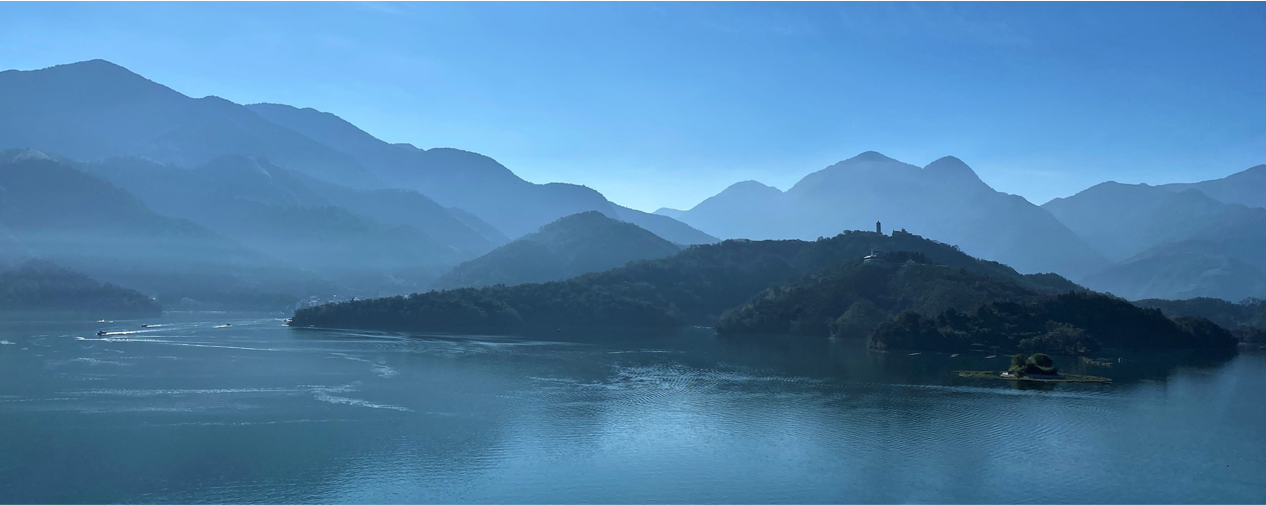7 DAYS
Greetings for arrival and Transfer to Taichung
Morning: National Taichung Theater
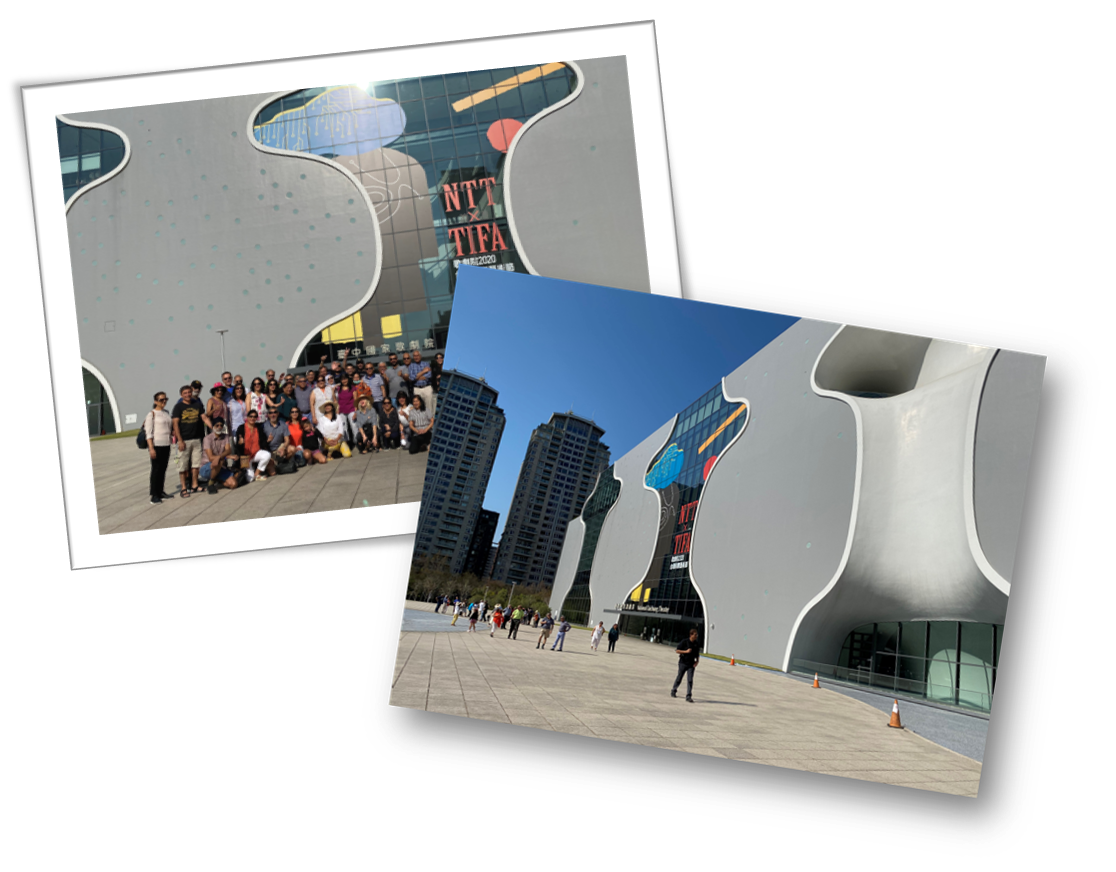
Afternoon: Traveling to Sun Moon Lake /Sun Mook Lake Tea Farm
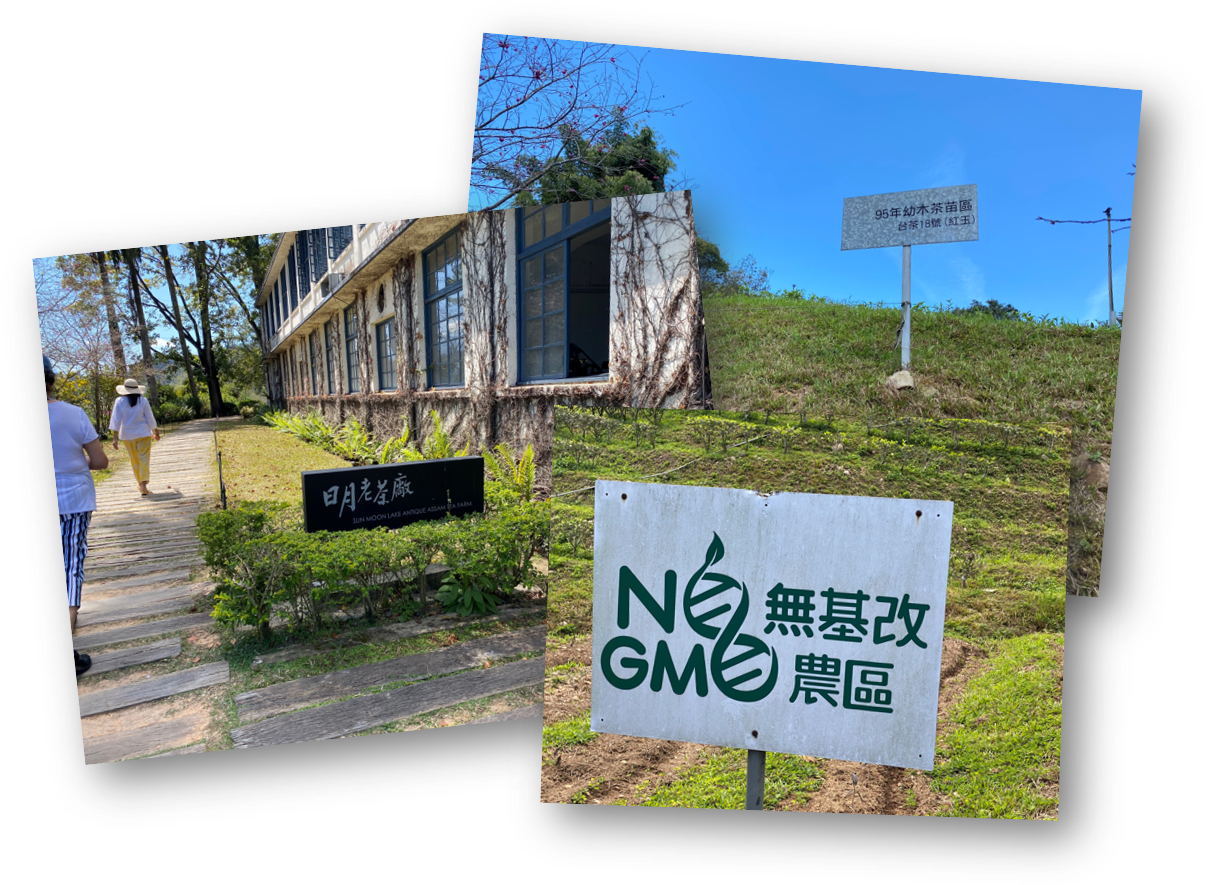
National Taichung Theater
The National Taichung Theater was designed by Japanese architect Ito Toyo. Based on the "sound cave" concept, elements such as curved-wall units and air holes are used to build this changed space. The result is a newfound building that stands on its own firmly without supporting pillars or 90-degree walls at all.
The theater is equipped with three professional performing venues which meet international standards: Grand Theatre, Playhouse and Black Box. They can each be adapted to fit the needs of various types of productions. There is also a multi-functional space, "Corner Salon," where educational events and public speeches may be held. The green Outdoor Plaza and the rooftop Sky Garden are great for the public to spend some leisurely hours in.
The architecture of the National Taichung Theater is a work of art. The theater's performing venues and garden are unique, too. It is worth paying a visit here for an artistic feast, from the inside out!
Sun Moon Lake Tea Farm
The weather in Yuchi Township is suitable for planting black tea, whose origin can be traced back to the Japanese Rule. Thus, Yuchi Township is known as the home of black tea. One of its black tea variations, “Hong Yu” (meaning “red jade” in Mandarin) - TTES No. 18, represents the fragrance of Taiwan. With a natural aroma of cinnamon and mint, Hong Yu carries an intense, resounding taste, and its tea liquid is in a crystal-clear red color. Moreover, TTES No.21 - also named “Hong Yun” (meaning “red resonance” in Mandarin), is highly popular in recent years. The mellow, fine tea, flowered with the aroma of sweet pomelo and ripe fruits, is another good choice.
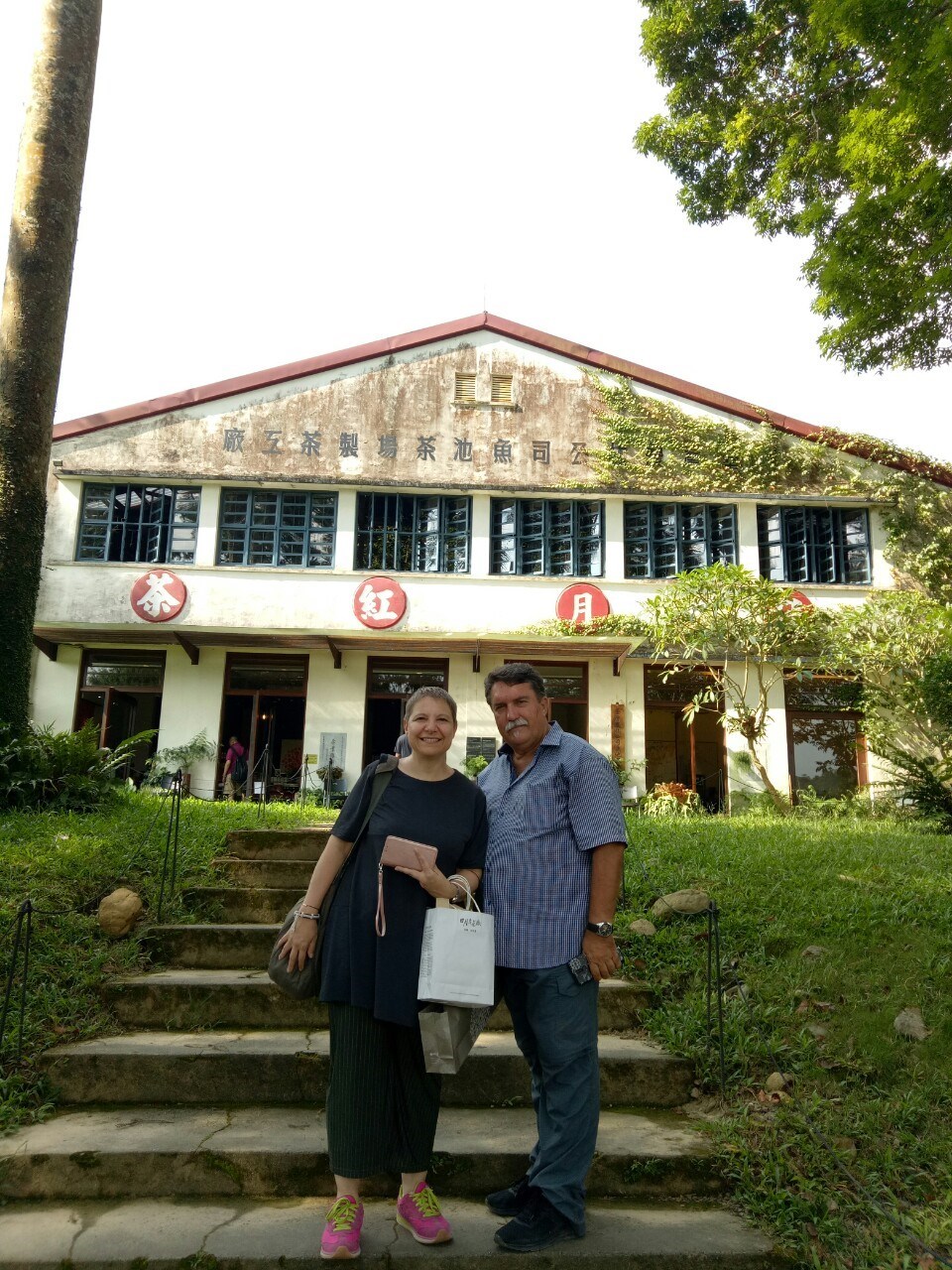
-
-
v
v
-
4-star or 5-star hotel in Sun Moon Lake
Breakfast at Hotel
Morning: Shianshen Tourist Center /Biking around Sun Moon Lake/Tzean Tower
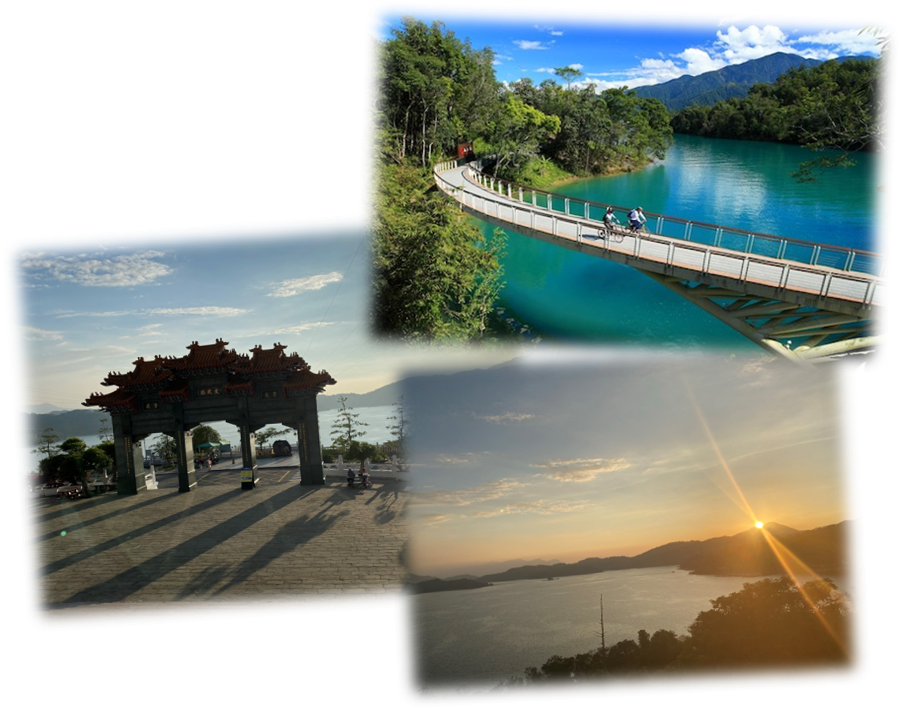
Afternoon: Boat Trip around Sun Moon Lake / Wenwu Temple
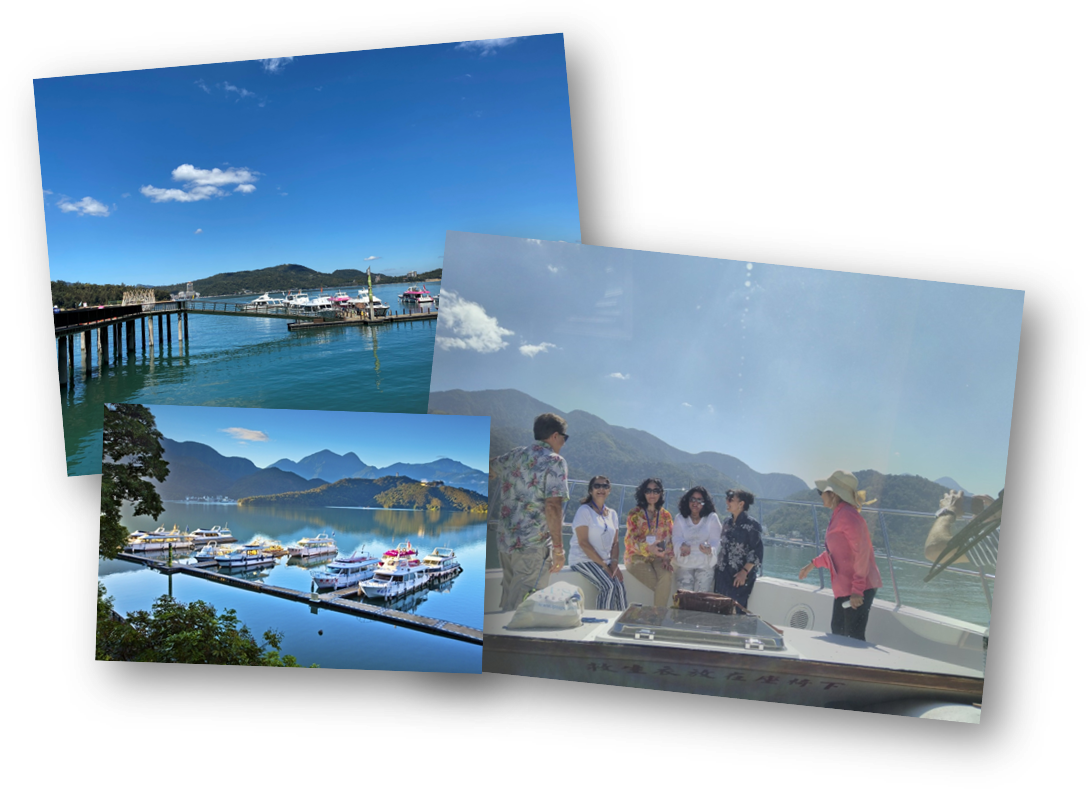
Sun Moon Lake
Sun Moon Lake, located in the middle of Taiwan, with an elevation of 748 meters above sea level, is the only natural big lake in Taiwan. The southern part of Lalu Island is shaped like a new moon, and the northern part is shaped like a sun; hence the name Sun Moon Lake.
Scenic resources
The most famous sights around Sun Moon Lake are Ita Thao, Lalu Island, Xuanzang Temple, the Ci-en Pagoda, Wenwu Temple and so on. The natural forests bordering these roads are good places for bird watching. There are a lot of birds that live on the mid-elevation, such as the Grey-cheeked Fulvetta, Grap-throated Minivet, Formosan Yuhina, Gray Tree Pie, Bamboo Partridge, Chinese Bulbul, Muller's Barbet, and the Black Bulbul.
Colonies of Black-crowned Night herons, Egretta garzettas, and birds, such as the common kingfishers and the Green-winged Teasl can be seen at the Dazhuhu water reservation, situated around the water gate. Besides these birds, fish, insects and wild vegetables are flourishing in the region as well. These are all natural resources of the Sun Moon Lake region.
The Shao Clan is the earliest clan that lived in the Sun Moon Lake region. The Harvest Festival, Sowing Festival and their special handicraft fair every year, as well as their articles have helped to preserve the particular culture of the Sun Moon Lake region.
-
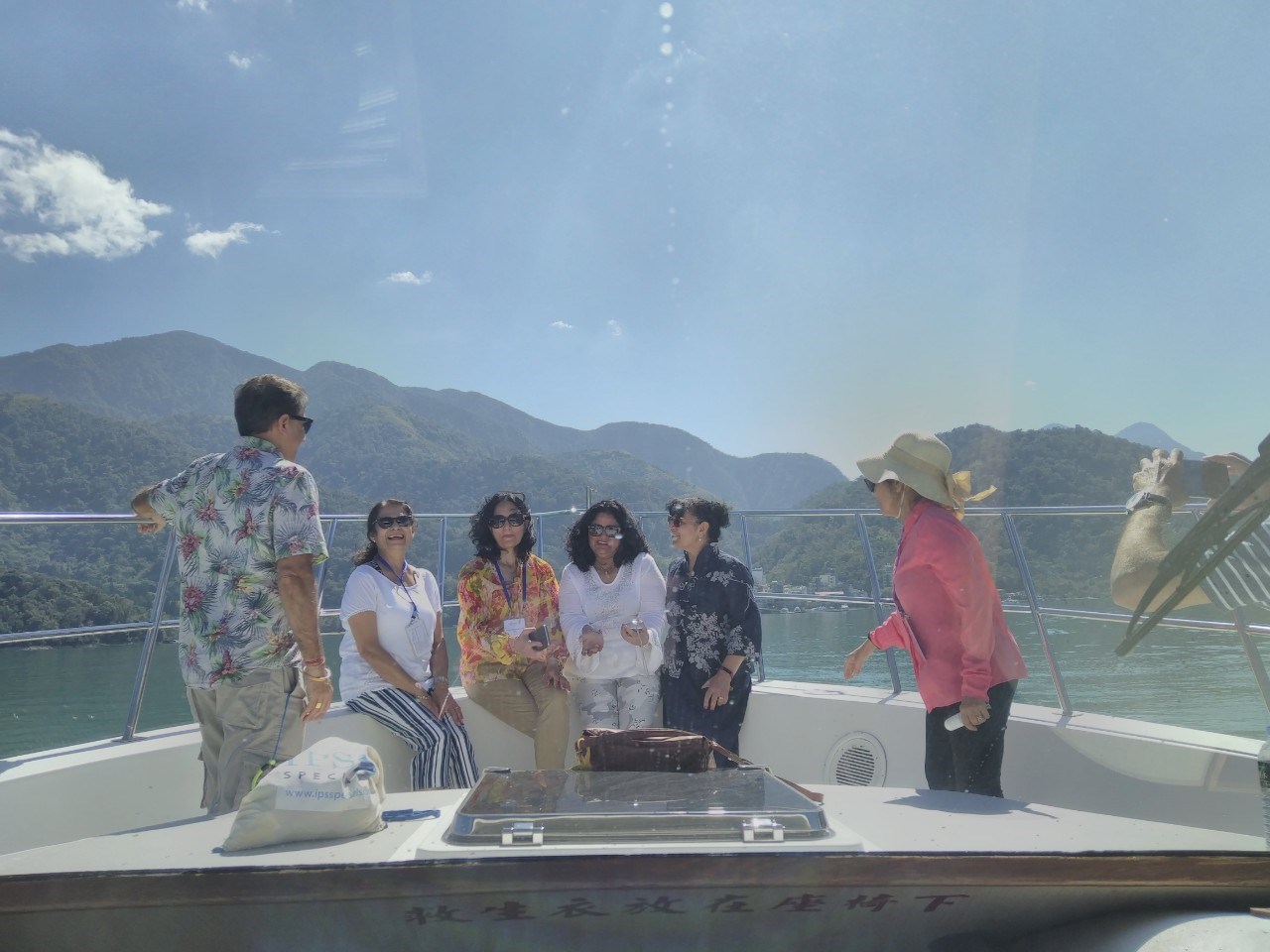
Lalu Island/ Boat Trip around Sun Moon Lake
Located in the center of Sun Moon Lake, Lalu Island was called Guanghua Island in the past. Sun Moon Lake is the most famous water reservoir in Taiwan. Lulu Island is known as the island on the water. This area was dwelled by the Thao tribe in the past and the island had been called Lalu until 1946, when the government renamed it Guanghua Island. In the severe earthquake in 1999, Sun Moon Lake reservoir was damaged and a historic site of the Thao tribe was discovered. Thus, in 2000, the island was renamed Lalu again. The Thao tribe considers the island a sacred place and thus tourists cannot visit the island; however, you can still learn about the Thao tribe along the tracks surrounding the lake.
Lalu Island is said to be a sacred place for the Thao tribe. Witch candidates of the tribe would have to come to the island to seek approval of the ancestors' spirits. The witches are in charge of incantation and rituals. The Japanese also left a stone monument, remembering the development of Sun Moon Lake during Japanese occupation. -
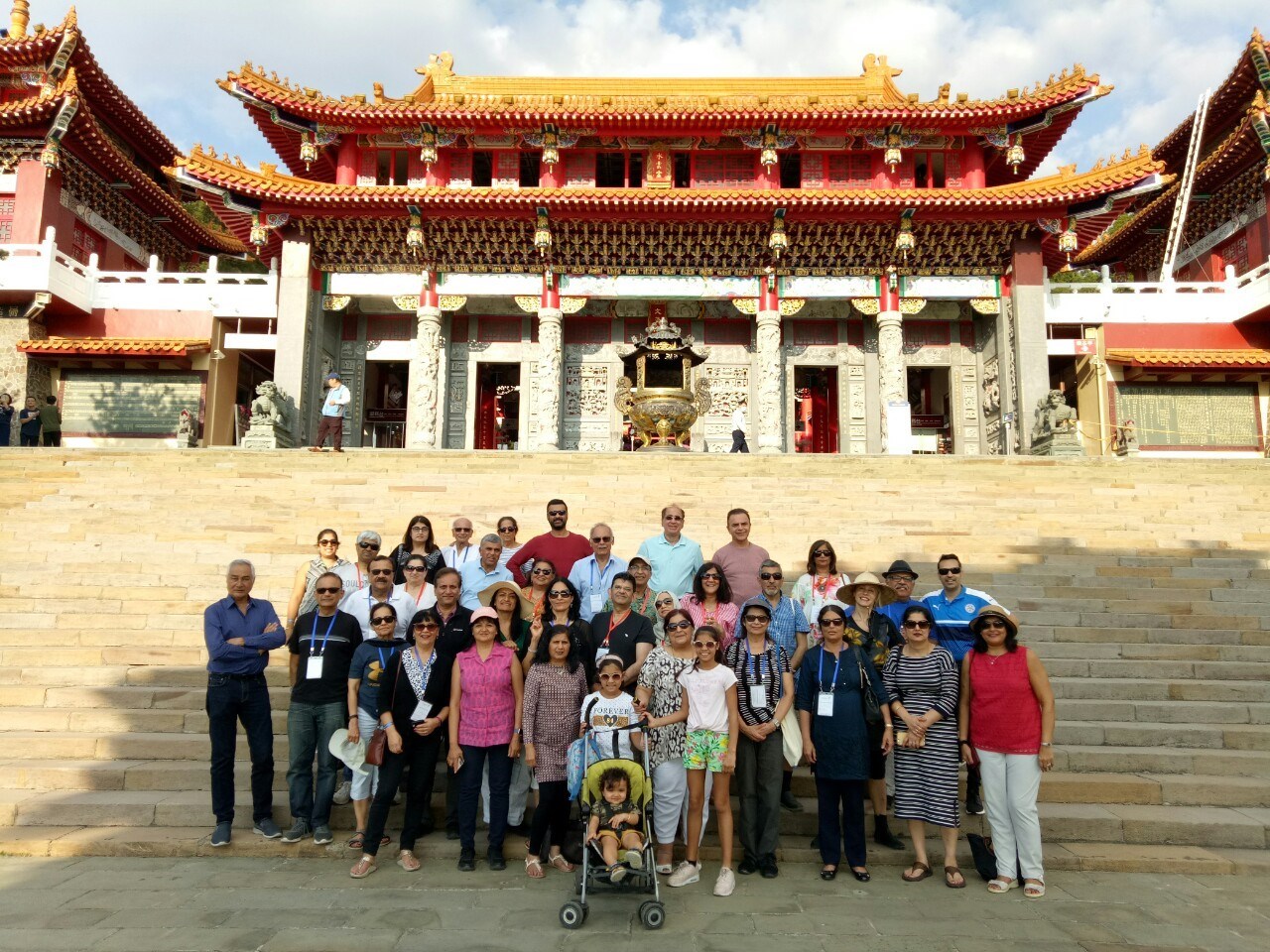
Wenwu Temple, Sun Moon Lake
Wenwu Temple is located at the shoulder of mountain where is on the north of Sun Moon Lake. It was built in 1938. People worried the water of Sun Moon Lake might cover Longfeng Temple and Yihua Hall of Shuishotsun(Ita thao Pier), they built Wenwu Temple. The Wenwu Temple is 2 (Longfeng Temple and Yihua Hall) in 1. It was rebuilt in 1969. Its gate is face to the north. People pray the Civil Saint of Confucius, the Military Saint of Guangong, and the Established God of two temples at the Wenwu Temple. The temple is popular among students.
-
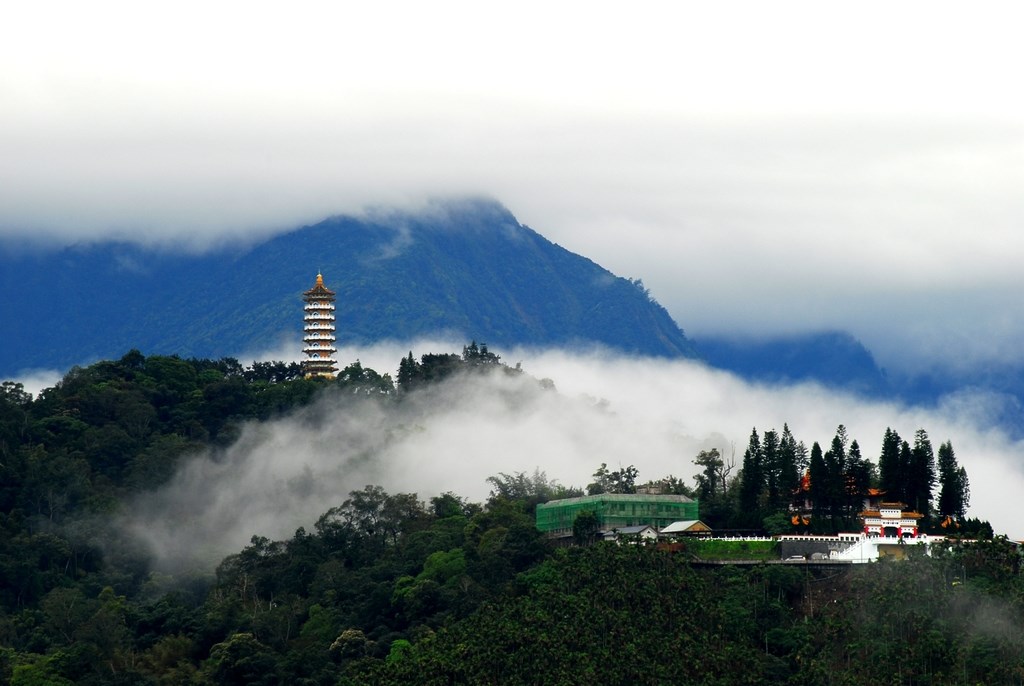
Ci'en Pagoda
Ci'en Pagoda is located on Sha Ba Lan Mountain near Sun Moon Lake. It was built by Chiang Kai-Shek in memory of his mother in 1971. The construction was very difficult because the materials had to be shipped over the lake and moved up the mountain. The Ci'en Pagoda is 46 meters in height and has become the famous landmark of Sun Moon Lake. Surrounding the tower are beautiful plants and trees and there are stone tables and chairs for visitors to take a rest. The Ci'en Pagoda overlooks Lalu Island and Sun Moon Lake.
Ci'en Pagoda is an octagonal building; the 3 stories at the base are painted in white, while the 9 stories of the main body are painted in golden red. Tourists can appreciate the magnificent scenery of Sun Moon Lake from the Ci'en Pagoda. The tourists track as long as 700 meters lead to the Ci'en Pagoda. Alongside the track are beautiful trees and flowers, which make the track easy and comfortable to walk along.
-
v
v
v
-
4-star or 5-star hotel in Sun Moon Lake
Breakfast at Hotel
Check out and transfer for 1 day tour
Morning: Lukang Old Street / Lukang Mazu Temple / Lukang Longshan Temple
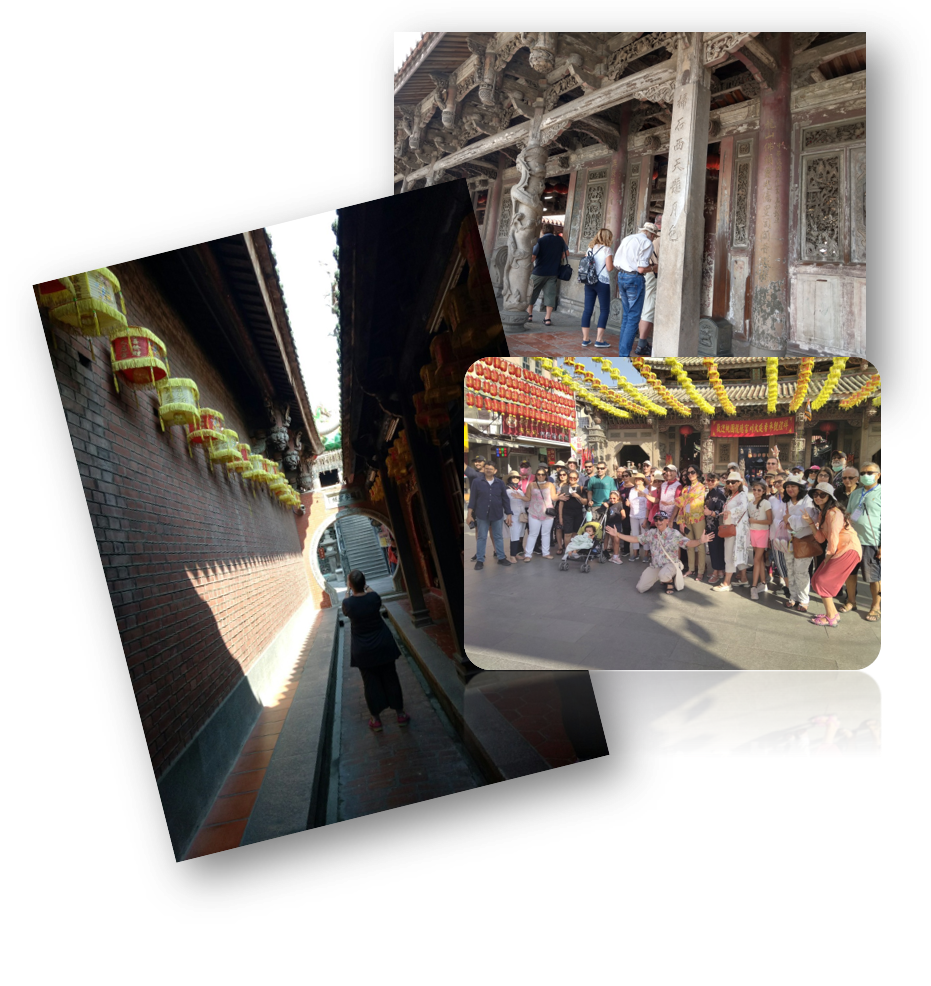
Afternoon: Tainan/ Anping Old Street / Kuohwa Street
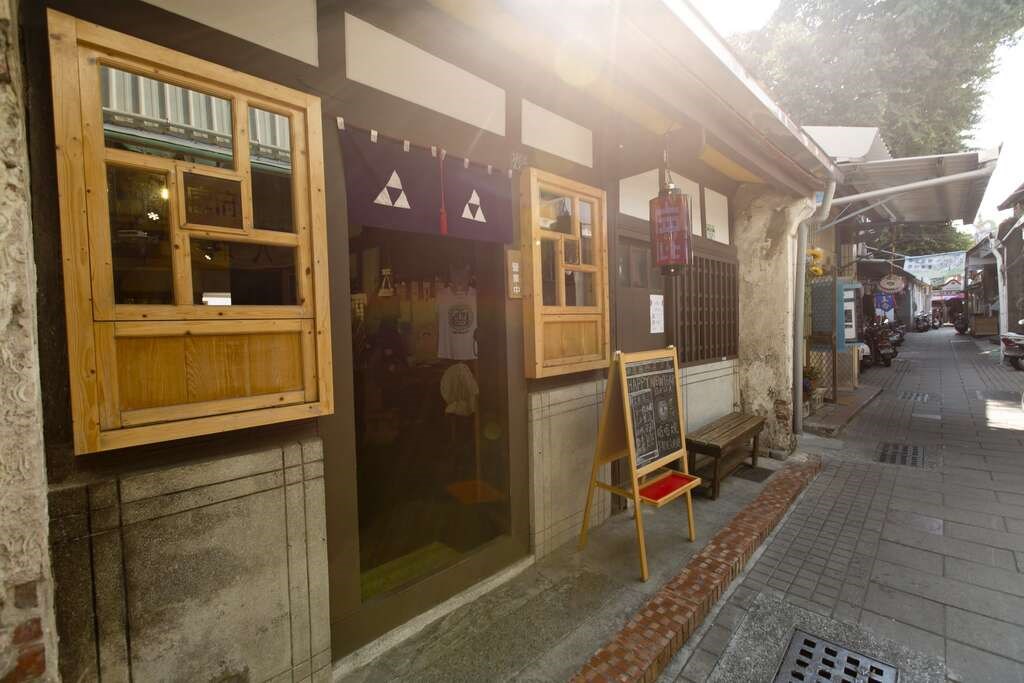
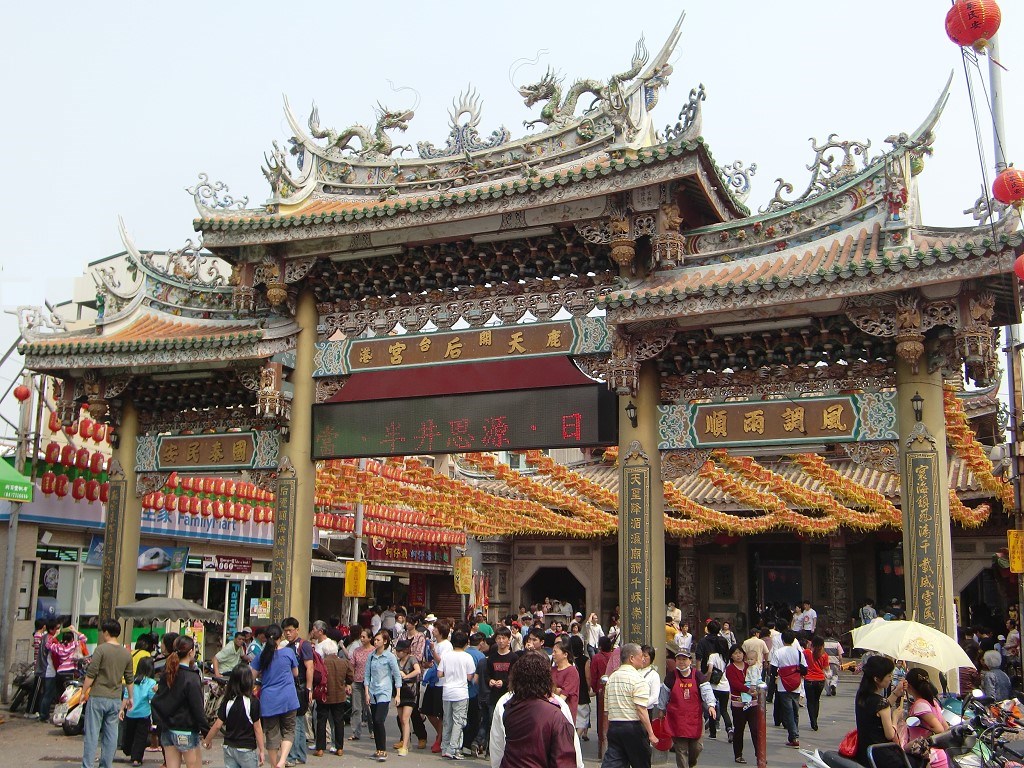
Lukang Tianhou Temple
Lukang Tianhou Temple is the one of the three major historic sites in Lukang. It lies on Zhongshan Road, Lukang. In the Ching Dynasty, General Shi Lang built the first temple of Goddess of Sea in Taiwan. The statue in the alter was imported from Meizhou, China. There are over 1 million worshipers coming here every year. With the smoke of the incense, the statues face has turned black, so the Goddess is also called black-faced Goddess.
Lukang Tianhou Temple is sublime and solemn and has elegant murals and paintings. In front of the temple is the dragon pond in a small garden. In the back of the temple, there is a culture museum of Goddess of Sea, introducing the history the Goddess and the role of the Goddess in the society. The historic materials preserved here are valuable, such as the board inscribed by a Ching emperor and officials, photos of the Meizhou Temple, and so forth.
One of the oldest temples in Taiwan to Mazu, the temple you see today is the result of a renovation in 1936, a Taoist divinity venerated as Goddess of the Sea and Empress of Heaven, is situated at Lukang. Mazu's birthday is March 23rd of the lunar year.
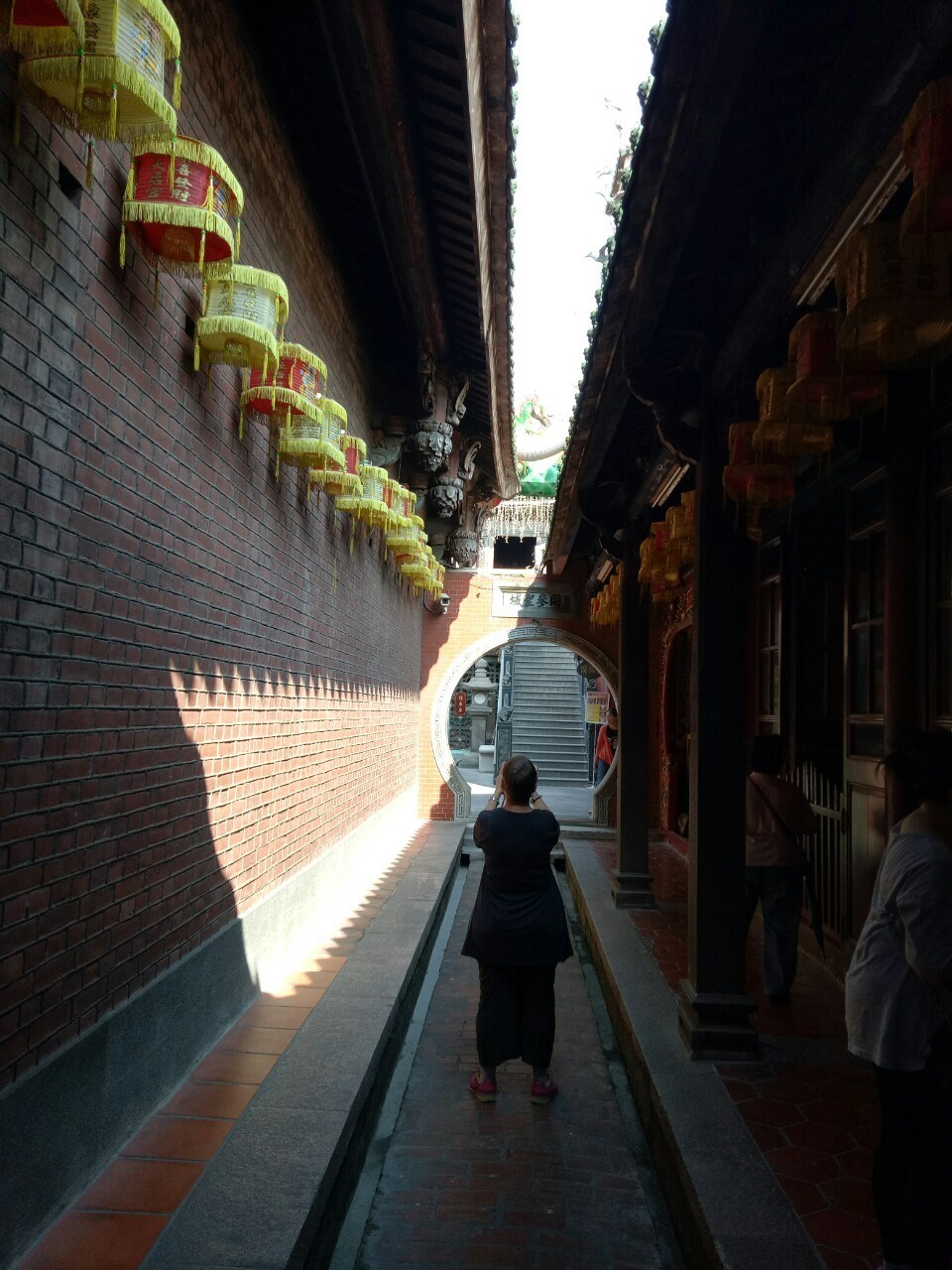
Lukang Old Street
This street is made up of the curved, red-tiled lanes of today's Putou, Yaolin, and Dayou streets. Both sides of the streets are lined with newly renovated old-style shop buildings that feature intensely interesting internal room layouts and old-style exteriors. Here you can feel some of the atmosphere of old Lukang.
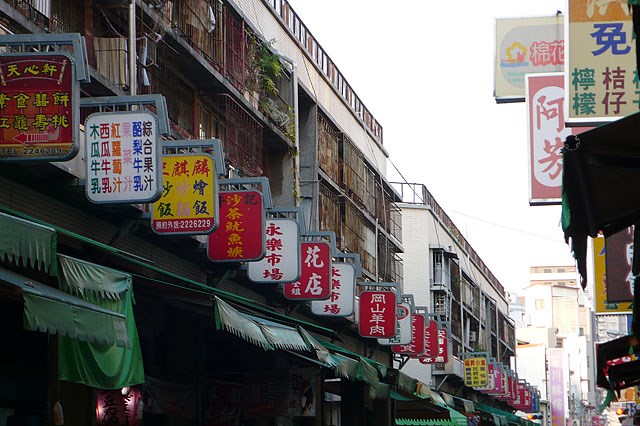
Guohwa Street, Tainan
Guohua Street is one of the best little streets in the city to explore. It is the little brother to broad Ximen Road, running parallel to it from Jiankang Road to a little past Chenggong Road. From traditional Yongle Market, though the revitalized Youai-Guohua shopping area and on through residential streets, this narrow road packs in a whole lot action and stimulus.
-
v
v
v
-
4-star or 5-star hotel in Tainan
Breakfast at Hotel
0900 Check out and transfer for 1 day Tour in Tainan/Kaohsiung
Morning: Tainan Chihkan Tower/ Eternal Golden Castle / Confucius Temple
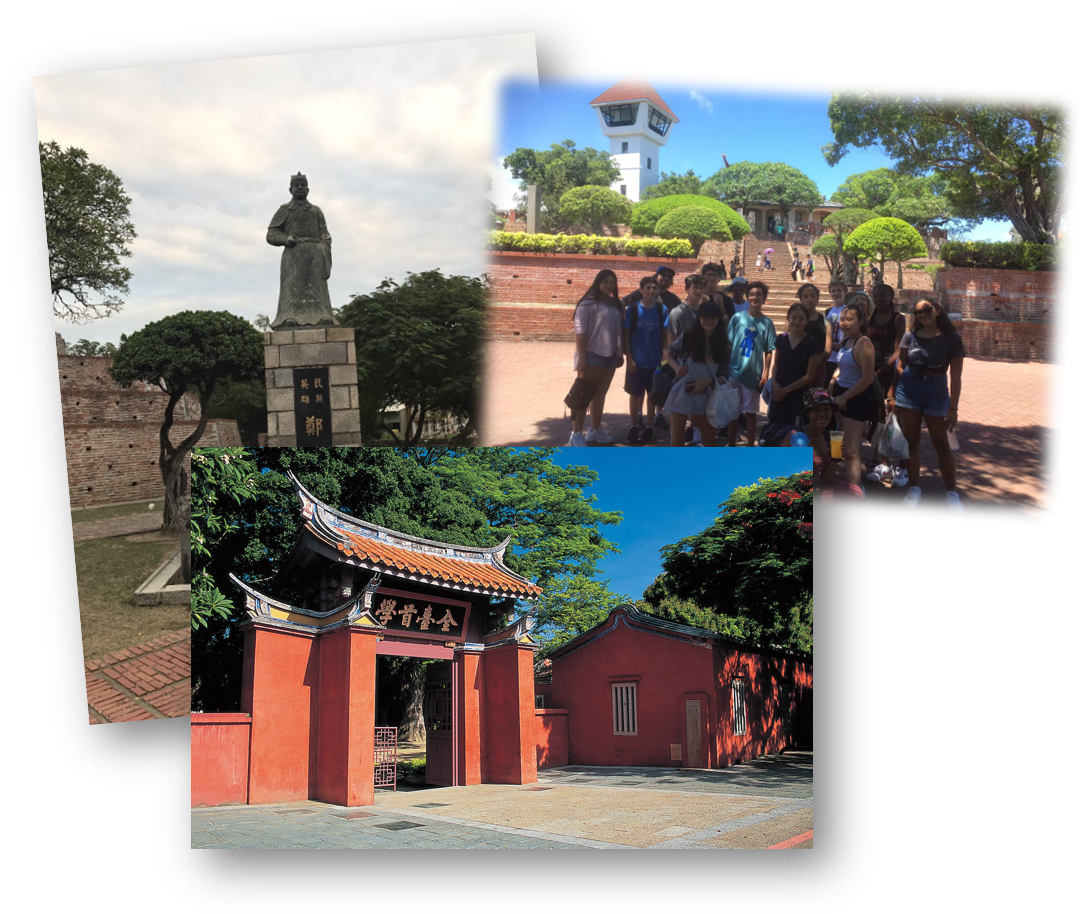
Afternoon: Forguanshan Monastery / Lotus Lake / Foromosa Subway Station/Pier 2/National Center forthe Arts(Weiwuyin)
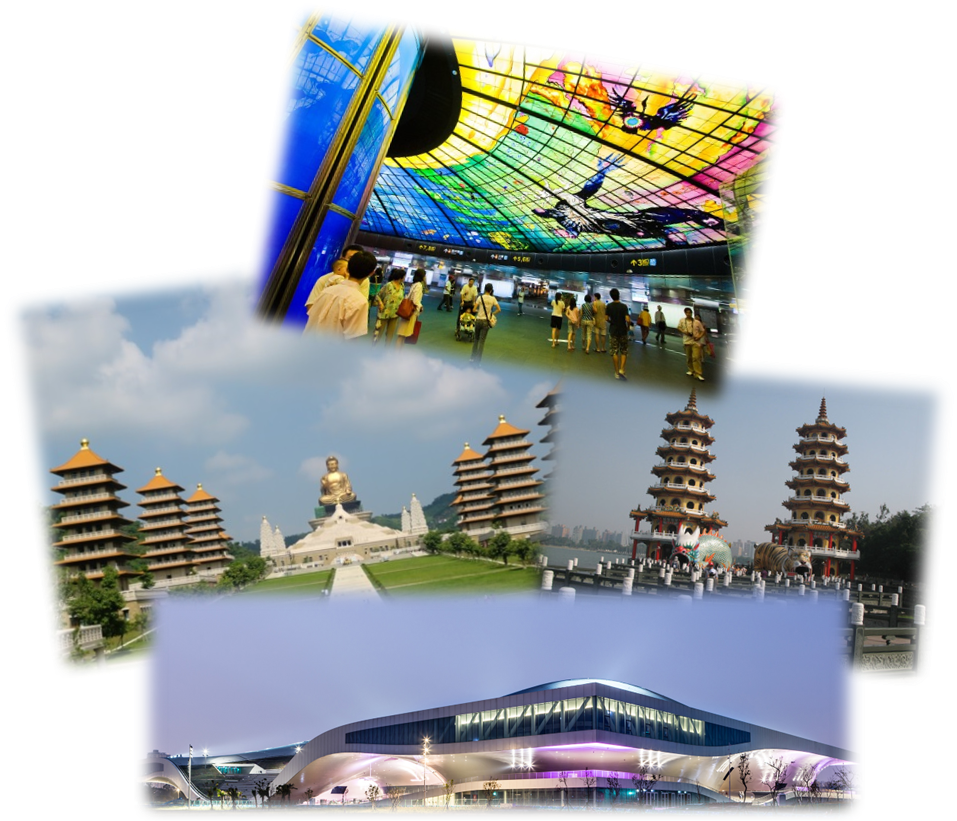
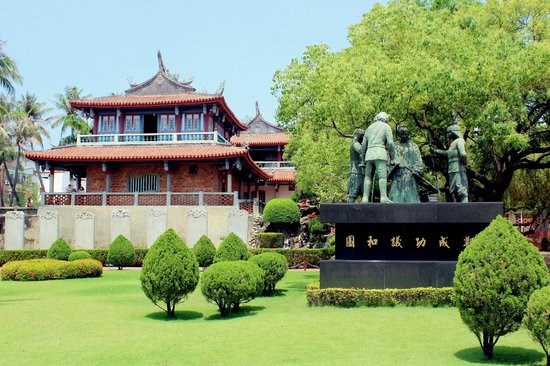
Chikan Tower
Tainan Chikanlou is built by the Dutch in 1653. It was originally called Provintia. In Dutch it means eternity. The Chinese called the building "Chikanlou", "Fanzailou" or "Honmaolou". Although Chikanlou has gone through Ming Dynasty, Qing Dynasty and the Japanese Colonization Period, it basically still maintains its original look.
Chikanlou has been an administration center from the Dutch's occupation period. In 1661, when the Chinese General Cheng Cheng kung repelled the Dutch, Provintia was changed to be Chentien governor's mansion. In the early stage of Qing Dynasty when Taijiang River was still running, the tides could reach Chikanlou directly. "The sunset in Chikanlou " was one of the eight famous scenes in Taiwan. In front of Chikanlou there are nine sets of stone turtles carrying plates. There were made in Qing Dynasty and were removed from elsewhere to be located here. The legend says that the stone turtle is one of the dragon's nine sons. It shifted into a turtle because it loved to endure heavy objects. There is also a stone horse with broken legs. The legend says that the stone horse's legs were broken by force because it shape-shifted into a monster at night and harassed the residents. Later, Chikanlou declined due to damages caused by civilian upheaval and lack of management. Chinese style building was added to the original Dutch architectural body. For a time the place hosted the worship for Guanshiyin Budda. During the Japanese colonization period, Chikanlou was changed to be army hospital. There were some restoration and repair. After Taiwan was returned to R.O.C., the wooden structure was changed into steel concrete structure. The main entrance was changed. Thus they created the look of Chikanlou today.
-
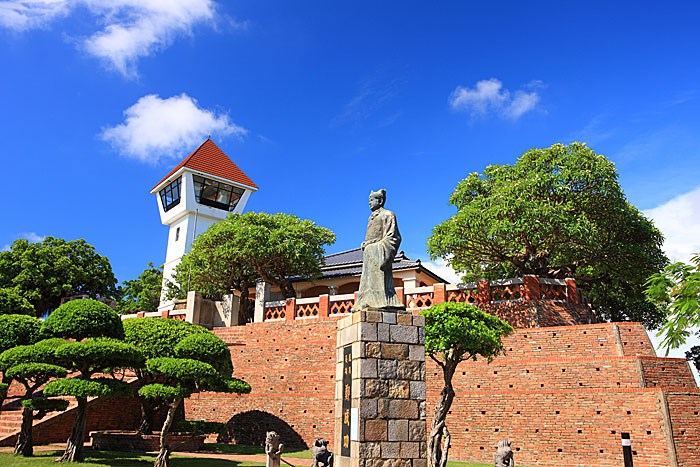
Anping Fort
In 1624, Dutch built the first fort in Anping, Taiwan, called "Fort Zeelandia", now known as Anping Old Fort, where has been the administrative center of the Dutch regime, and the hub for trading. The building was originally constructed in square inner fortress and rectangle outer walls. In 1661, the fort was renamed as Anping to commemorate his home town when Koxinga (Cheng Cheng Kung) has driven the Dutch out of Taiwan. Therefore, Fort Zeelandia was also known as "King's Fort" or "Taiwan Fort", nicknamed Anping Old Fort.
In Kangxi Emperor's regime of Qing Dynasty, Taiwan was included in the empire that the political center was transferred to Tainan City, causing the decline of the Fort. The red bricks of the Fort have been taken for construction of Eternal Fortress. During the Japanese occupation, the Dutch style buildings in inner fortress were completely destroyed. A square red-bricked step platform was constructed with a western style house on the platform, being served as dormitory for Customs officials, where the memorial hall now is located. It was named Anping Old Fort after Restoration of Taiwan and become an attraction for tourists. The remaining more than 70 meters long south walls of the outer fort with worn-out red bricks, accompanied by the old banyan roots, chanted its odyssey. The fort is the very historical replica over three hundred years. -
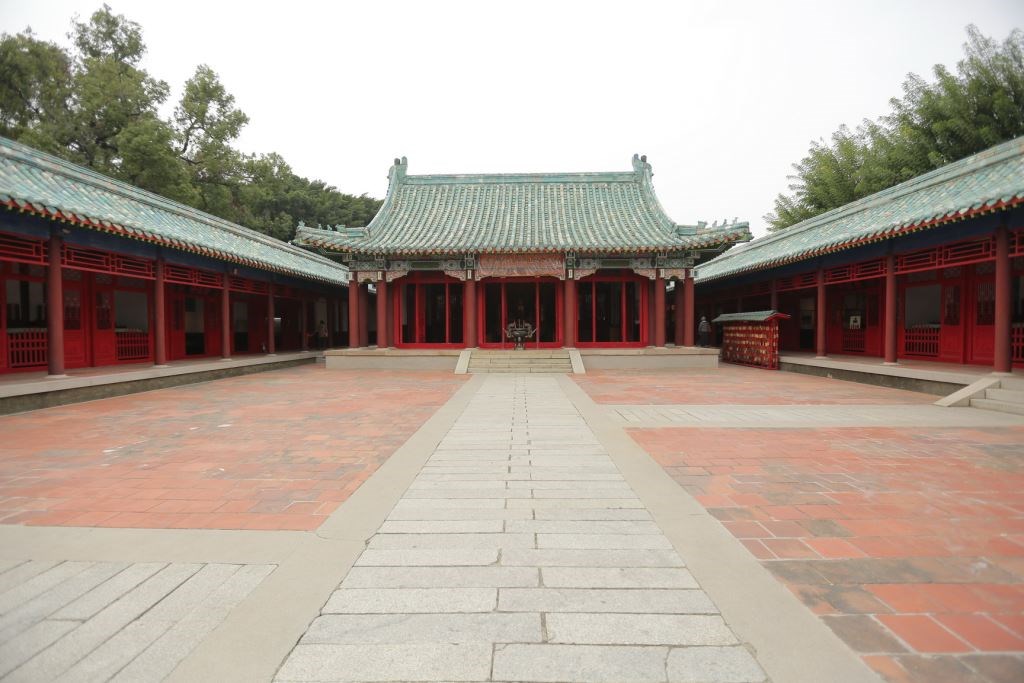
Koxinga Shrine
The Koxinga Shrine (Yanping Junwang Temple), located by Kaishan Road surrounded by trees, is the only Fujianese style shrine in Taiwan. This is the shrine built in memory of the work and achievement of Cheng Cheng Kung, the pioneer of Taiwan. Cheng Cheng Kung was originally called Cheng Sun, a native in County Fujian. His father, Cheng Chi Lung, was a wanderer in his early days. He has been a merchant as well as a pirate. His mother was a Japanese lady called Tagawa. Cheng was born with great intelligence. Not only was he diligent in his studies, he also has a huge ambitious to achieve something big, i.e. to become someone who are good in both academic work and in the military field. By the time he was 21 years old, Wu San Kuei led the Qing army into China and the Ming dynasty thus came to an end. As a result of his father surrendered to the Qing Dynasty and his mother committed suicide, Cheng Cheng Kung suffered a lot of pain and decided that he should turn against the Qing Dynasty to rejuvenate the Ming Dynasty in order to get rid of the shame caused by his father's traitor behavior. In April 1661, which is the 15th year of Emperor Yung Li's reign, he led his army crossing the Taiwan Strait and after 9 months' battle, had finally retrieved Taiwan from the hands of the Dutch. Taiwan thus was no more a colony of the Netherlands. After gaining access to Taiwan, Cheng quickly built up the whole place by setting up governing offices, regulations, education system as well as developing more farm lands to improve the living standards of the local people. He also actively trained people in military tactics, preparing them to fight the Qing army. However, just half year after he had retrieved Taiwan, Cheng died of illness on May 8, 1662. His aim of rejuvenating the Ming Dynasty was unfulfilled which was the biggest regret of his whole life. In 1874, which is the 13th year of Emperor Tongzhi of the Qing Dynasty's reign, emperor's special envoy Shen Bao Chen requested for the enlargement of the then existing Kai Shan Wang' shrine which was in memory of the work of Cheng Cheng Kung. It was approved by the regime and the new shrine was officially called "Koxinga Shrine" and for people to pay tribute to this folk hero.
Inside the Koxinga Shrine, there is the Koxinga Museum where exhibits various historical culture of Tainan. The first floor is for pre-historic preserves and dig-ups. Apart from illustrating the geographic connection between Taiwan and the Mainland, these things also describe the evolution of life from the past to the present. Most of the exhibits in the second floor are the historical materials of Tainan. These include the materials and things related to the concerned ancestors, such as the portraits of Cheng Cheng Kung and Shen Bao Chen, and also their works. In addition, daily items of Tainan city of the old like the street signs, bedding equipment, land deeds, money bills are on exhibition so that the public can understand the daily life of the past generations. It is a cultural spot very worth visiting. -
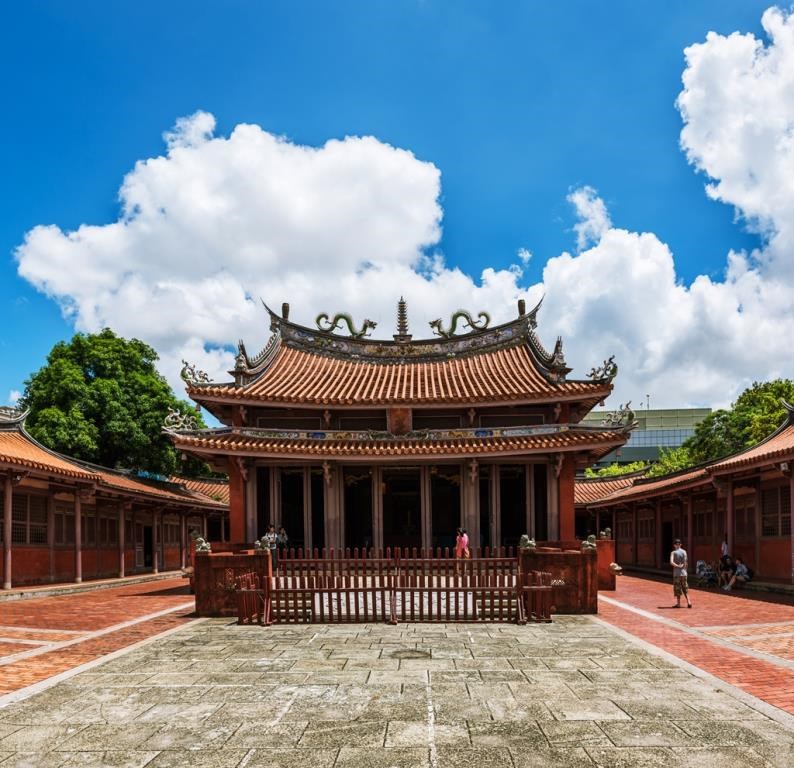
Confiucius Temple
The Confucius Temple in Tainan was built in 1666, it was the first Confucius Temple, before the end of Manchu Dynasty, it was the location of the highest official institute of higher learning in Taiwan. The Taiwan Palace of "Confucianism Study," it owned the incompatible position of culture and education, and was called "The Highest Institute." The Confucius Temple has been through more than thirty times of reconstruction, a part of the building was destroyed during the wars or ruined by nature disasters; the present scale of the Confucius Temple was the look after reconstructing during the time when Japanese were ruling (1917), its elegant and simple localization characteristic takes a distinctive attitude of its own among the Confucius Temples buildings in Taiwan. There are fifteen structures inside the Confucius Temple, the primary sacrifices in the palace is to Confucius divine tablet, on both sides, the sacrifices are to the sixteen pupils of Confucius.
Between the beams and pillars, there hang twelve horizontal described boards awarded by sovereigns of all dynasties since early Manchu Dynasty till today, it is the Confucius Temple in Taiwan to own the most complete royal horizontal described boards of all dynasties. Inside the temple, there are very old trees towering, classical elegant and tranquil, self-becoming a place of its own, the whole space presents a cultural breath, and is presently ranked among the national historic spots. Speaking of the preservation of the cultural articles in the Confucius, the inscriptional records through all times of repairs, the horizontal described boards awarded by sovereigns of all dynasties, and ceremony and musical instruments from early Manchu Dynasty till nowadays are still kept perfectly, and these are all very precious historical cultural articles that deserve to be carefully appreciated.
-
v
v
v
-
4-star or 5-star hotel in Kaohsiung
Breakfast at Hotel
Check out and transfer to Kenting
Morning: National Kenting Park
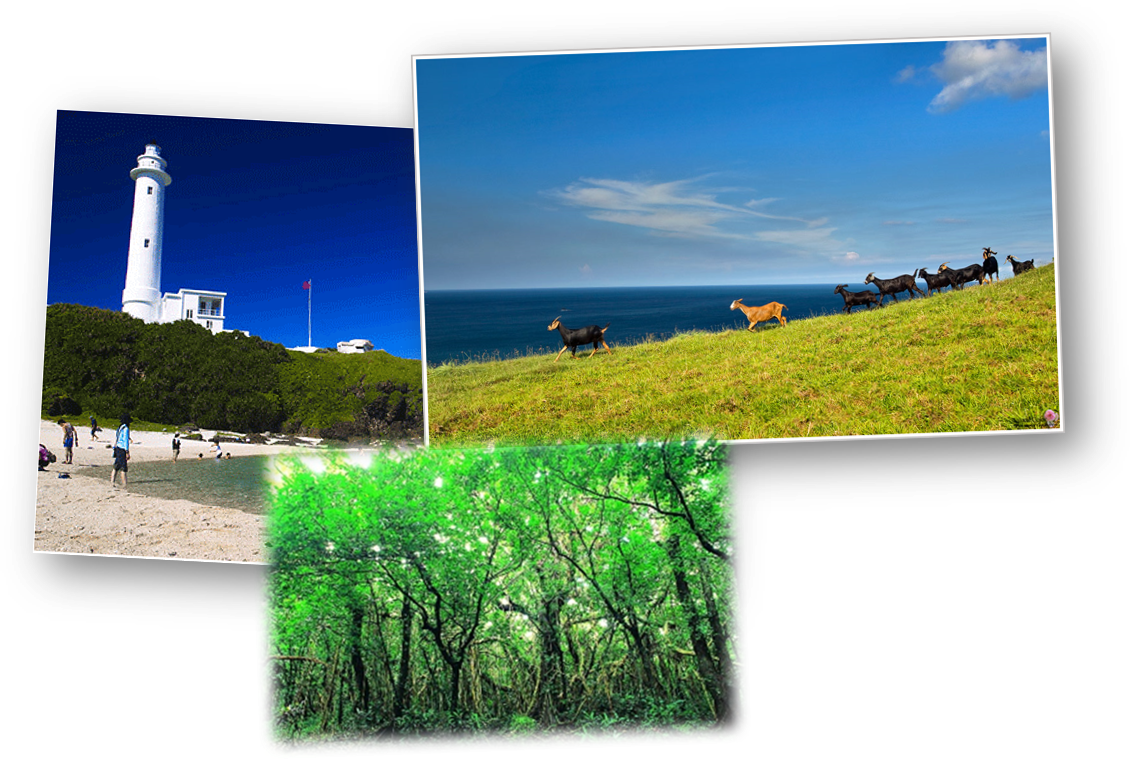
Afternoon: Eluanbi Lighting Park/Kenting Street
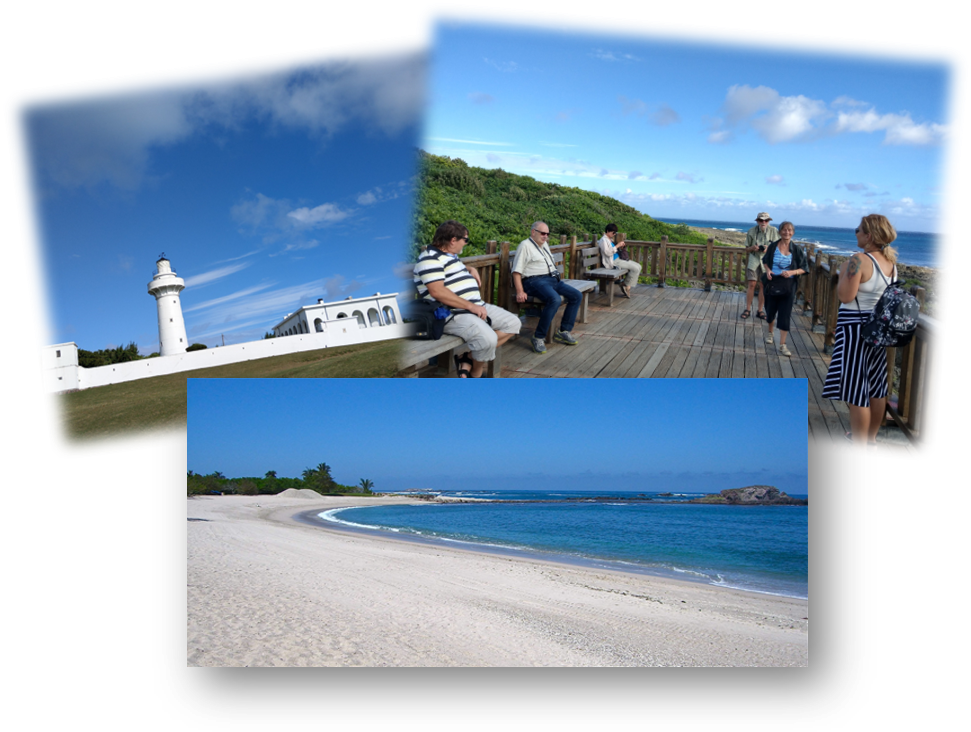
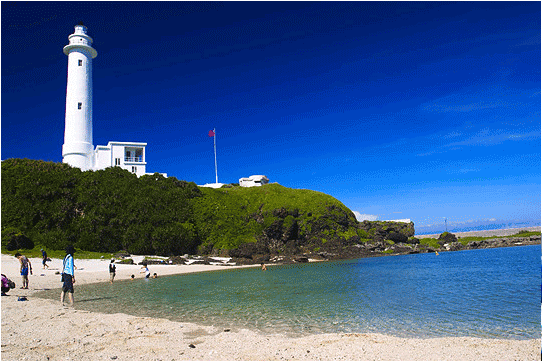
Eluanbi Lightinghouse
Kenting's rugged coastline provides some of the area's most outstanding attractions. The most prominent of these must be Eluanbi, also known as "Taiwan's Tail." This is the island's southernmost point.
Eluanbi Park was created in 1982 to provide an appropriate venue for people coming to visit Taiwan's southernmost point and one of the peninsula's most notable landmarks, the Eluanbi Lighthouse, also called "The Light of East Asia." It stands 21.4 meters high and is reputedly the brightest lighthouse in Asia. The park covers an area of 59 hectares. Within the park there are a number of recreational facilities and a wide range of interesting geological, botanical, and ornithological features. The area covered by the park is also one of the sites of Kenting's prehistoric cultures.
Kenting National Forest Recreation Area
Kenting National Forest Recreation Area in Hengchun Township of Pingtung County is located in the center of Hengchun Peninsula where the southern most tip of Taiwan. The elevation is 200-300 meters above sea level and the area covers an area of 75 hectares. The more than 1,000 species of plants grown here are arranged according to type, with areas for medicinal plants, tropical fruits, rubber trees, and so on. There are 17 scenic points that are linked together by walkways, offering visitors maximum convenience to view both the plants and the scenery. Sites not to be missed include the Looking-glass Tree, which is over 400 years old, with unusual buttress-shaped roots that grow above ground; the Fairy Cave, a 137-meter-long cave of stalactites and stalagmites, lit up by lamplight; the observation tower, a 27-meter-high tower from which the southernmost tip of Taiwan and far away Orchid Island can be seen; and the Valley of the Hanging Banyans, whose walls, overgrown by aerial roots, form a wonderland all their own.
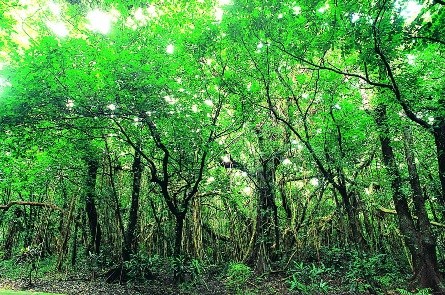
-
v
v
v
-
4-star or 5-Star Hotel in Kenting
Breakfast at Hotel
Morning: Leisure /Free activities in Hotel
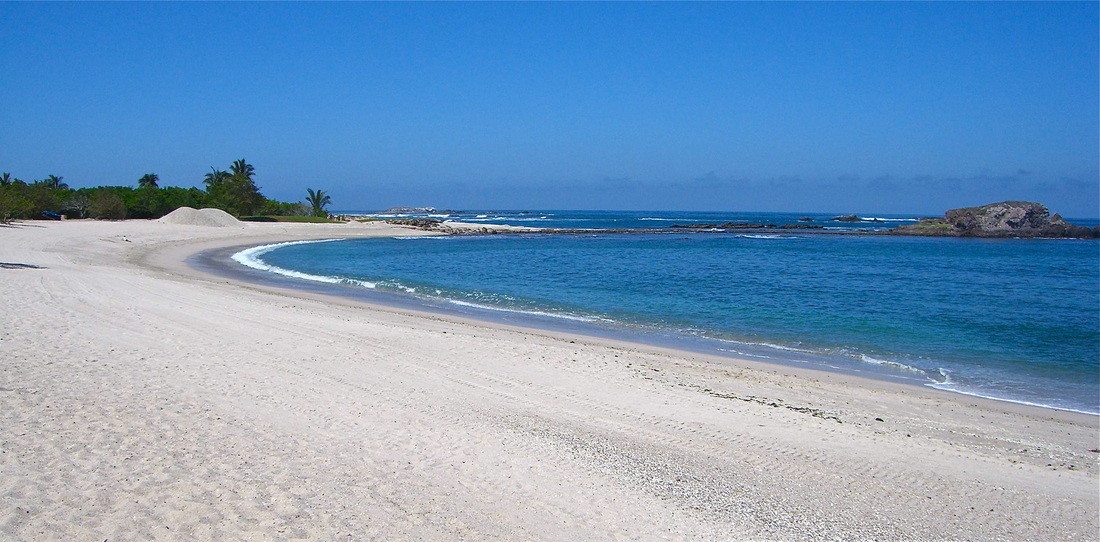
11:00 Check out and transfer to Kaohsiung
Afternoon: Maolin National Scenic Area
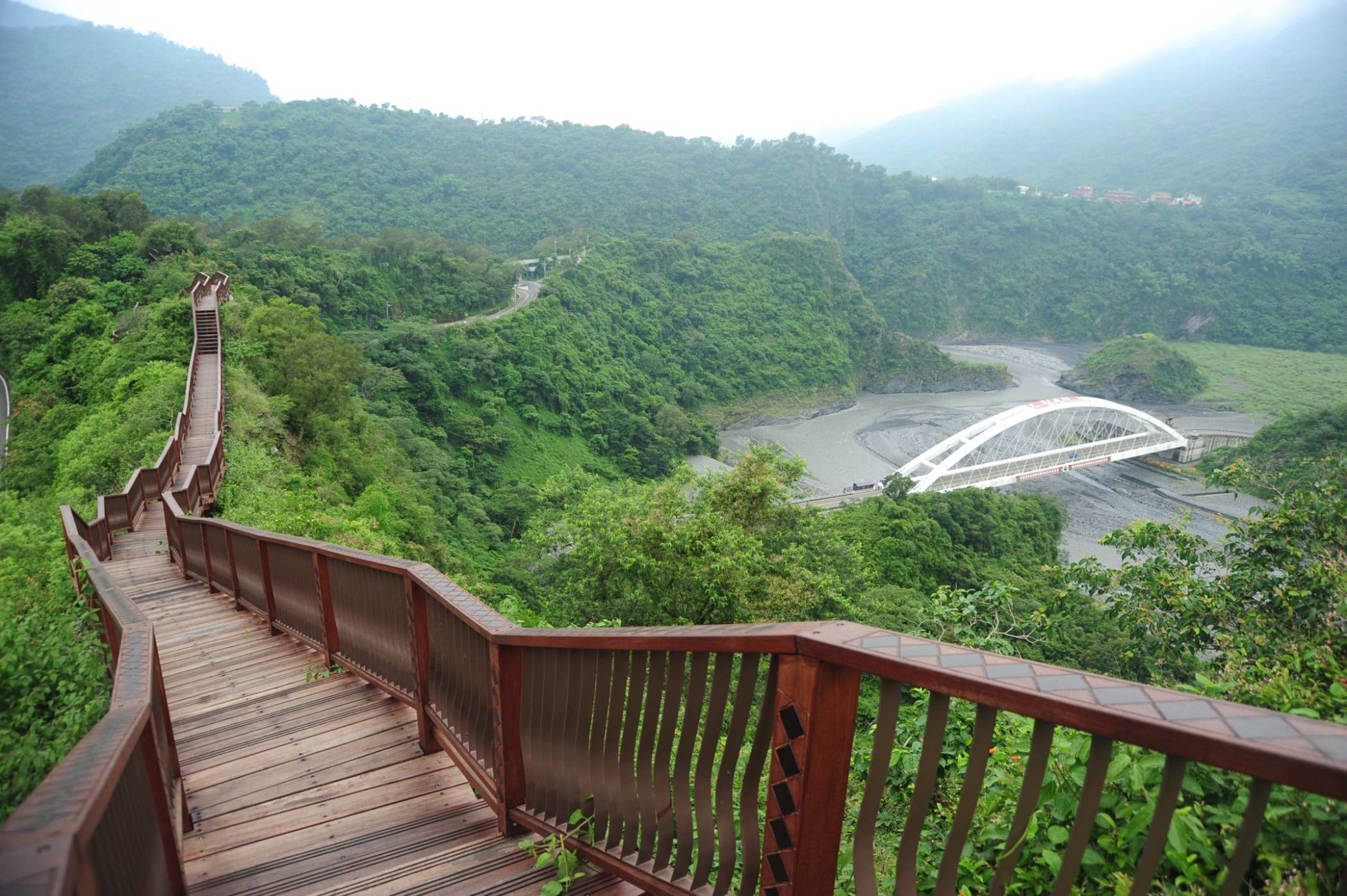
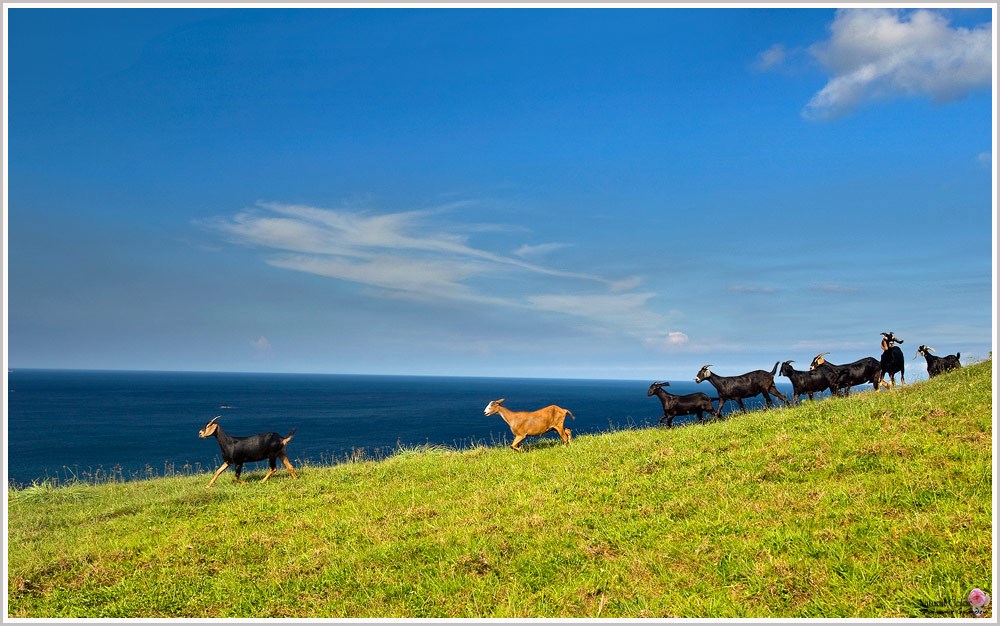
Kenting National Park
The centerpiece of the Hengchun Peninsula is Kenting National Park, Taiwan's only tropical national park. Established in 1982, Kenting National Park covers a total area of 33,268 hectares of land and maritime environments.
This is Taiwan's most densely populated national park, and it includes large stretches of agricultural land's providing visitors with a view of typical Taiwanese rural life. In addition, the national park includes mountains, forests, pasture, lakes, sand dunes, beaches, and coral reefs imply everything you could desire when you want to get up front and personal with Mother Nature.
Maolin Scenic Area
The Maolin Scenic Area covers the townships of Maolin and Liugui in Kaohsiung City, as well as parts of the administrative areas of Sandimen Township in Pingtung County. The Maolin Scenic Area has many scenic spots, such as the Baolai Hot Spring, Bulao Hot Spring, Duona Hot Spring, Shiba Luohan Mountain (Luohanshan), Meiya Valley Fall, Longtou Mountain, and Maolin Valley. Scenic resources Near the Shiba Luohan Mountain (Luohanshan) Reservation Area and the Meiya Valley, tourists can often see Formosan Macaque, squirrels, Varicorhinus barbatulus, and Taiwan blue magpies. All of them are precious resources in the Maolin Scenic Area. The state-owned forest in this area is another natural feature. The artistic side of the Maolin Scenic Area includes tunnels, temples, suspension bridges and aborigine cultures. Maolin, Wan Mountain (Wanshan), and Duona in Maolin Townships are reserved for aborigines. It is the home of the Rukai Tribe. The Rukai Tribe is famous for its slate houses. At present about 30 slate houses are being preserved in the Duona village of the Maolin Township, making it the largest collection of preserved slate houses in Taiwan. The Liugui Tunnel, consisting of six parts, is the only highway tunnel in southern Taiwan. Because of its views, the Liugui Tunnel has become a famous scenic spot. The Maolin Scenic Area has beautiful scenery and a lot of well-known Buddhist temples, such as the Miaotong and Miaocueng temples. The Maolin Scenic Area has many suspension bridges, the Duona Suspension Bridge being famous for its length.
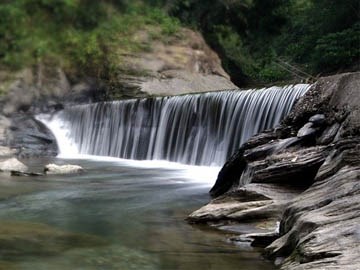
-
v
v
v
-
4-star or 5-star hotel in Kaohsiung
Breakfast at Hotel
Morning : Leisure and free time in Hotel
1100 Check out and transfer to High Speed Rail to take High Speed Rail to Taoyuan
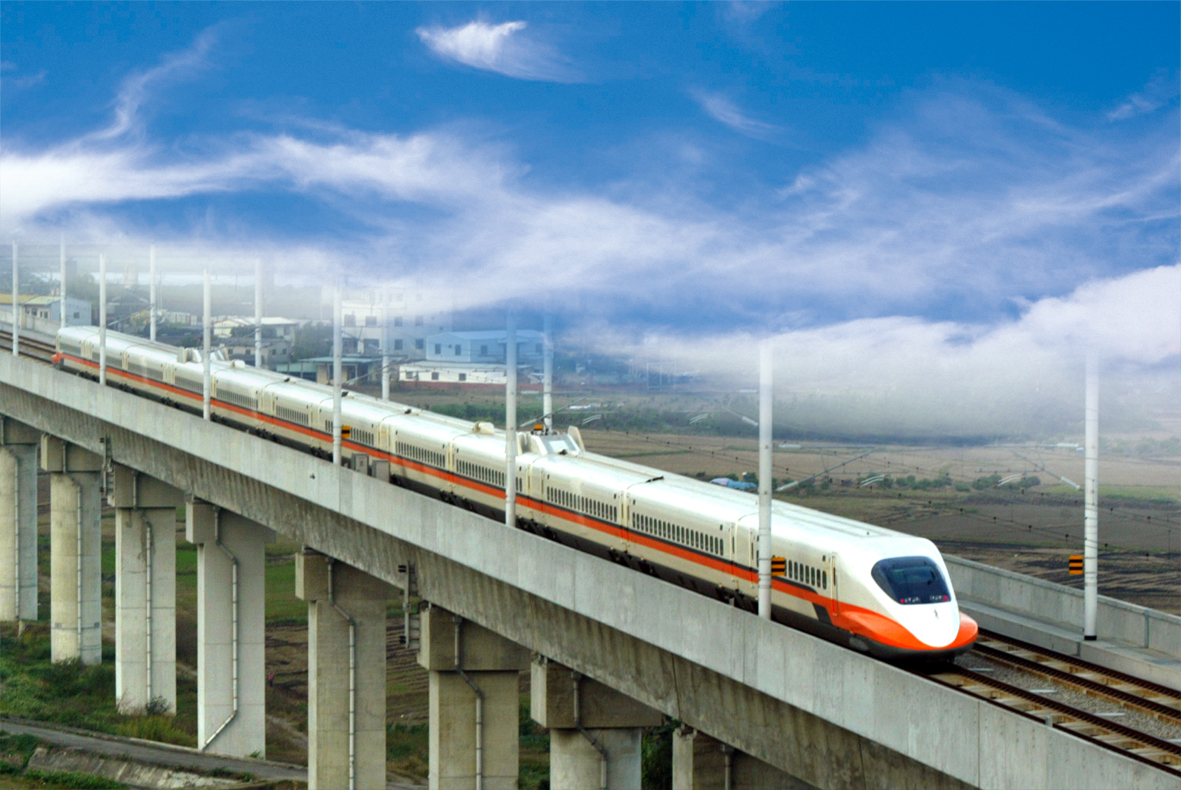
afternoon: Daxi Old Street / Taoyuan International Airport for Departure
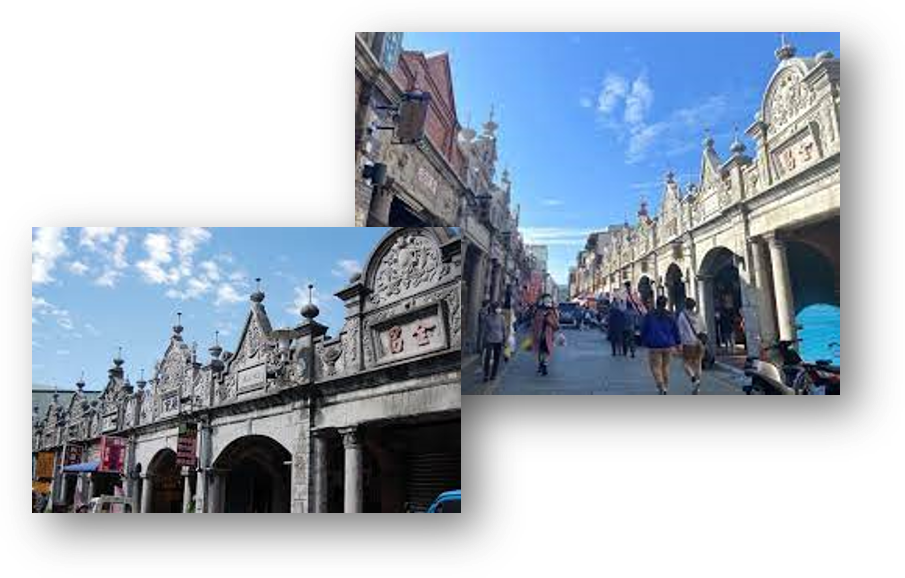
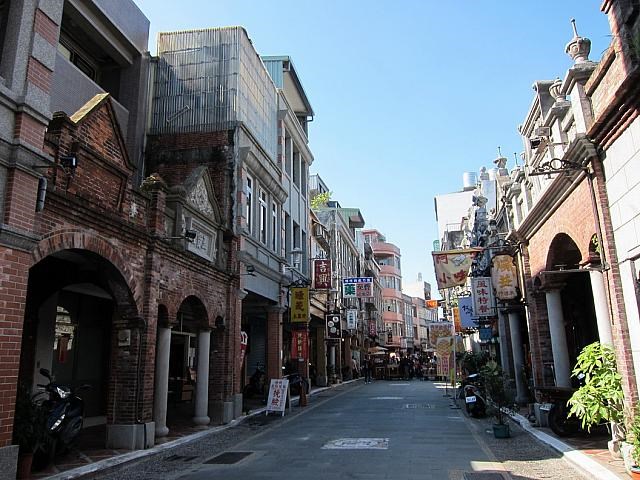
Daxi Old Street, Taoyuan
Daxi was the earliest developed area in Taoyuan. Thanks to small sailboats sailing between Dahan Creek and Tamsui River, Daxi had a thriving trade with China, and its prosperity brought success to many stores and businessmen. During the Japanese occupation period of the Taisho era, Baroque architecture was the popular building style and therefore many stores along Heping Road and Zhongshan Road were built in the Baroque style, but decorated with both Baroque ornamentation and characteristic totems of Min-nan in Southern China. On the facade of some old houses, auspicious Chinese fish and bat totems appear on Greek lintels or Roman columns, constituting a unique feature of Daxi. Because Heping Old Street was developed relatively later, the buildings in this area are better preserved. Specialty shops and food stands on the street always attract many tourists.
Other scenic attractions in the area include Daxi Bridge, Lee Teng-Fang Ancient Residence, Wude Temple, Daxi Wood Art Ecomuseum, etc. Daxi Old Street provides not only traditional Taiwanese toys, but also authentic must-try Taiwanese delicacies, including Daxi dried tofu, moonlight cakes, peanut caramel candies, tofu puddings, salty rice puddings and rice dumplings. When traveling in Taoyuan, be sure to visit Daxi Old Street, where you will experience the true Taiwanese flavor!
Taiwan High Speed Rail
Taiwan High Speed Rail has made Taiwan's public transport system more convenient, because it brings cities and towns closer. Today, passengers can even travel between Taipei and Kaohsiung in one day. Along the "Western Corridor" of Taiwan are 12 THSR stations: Nangang, Taipei, Banqiao, Taoyuan, Hsinchu, Miaoli, Taichung, Changhua, Yunlin, Chiayi, Tainan and Zuoying. Moving among the corridor's stations at 300km per hour the fastest, THSR offers truly convenient rides.
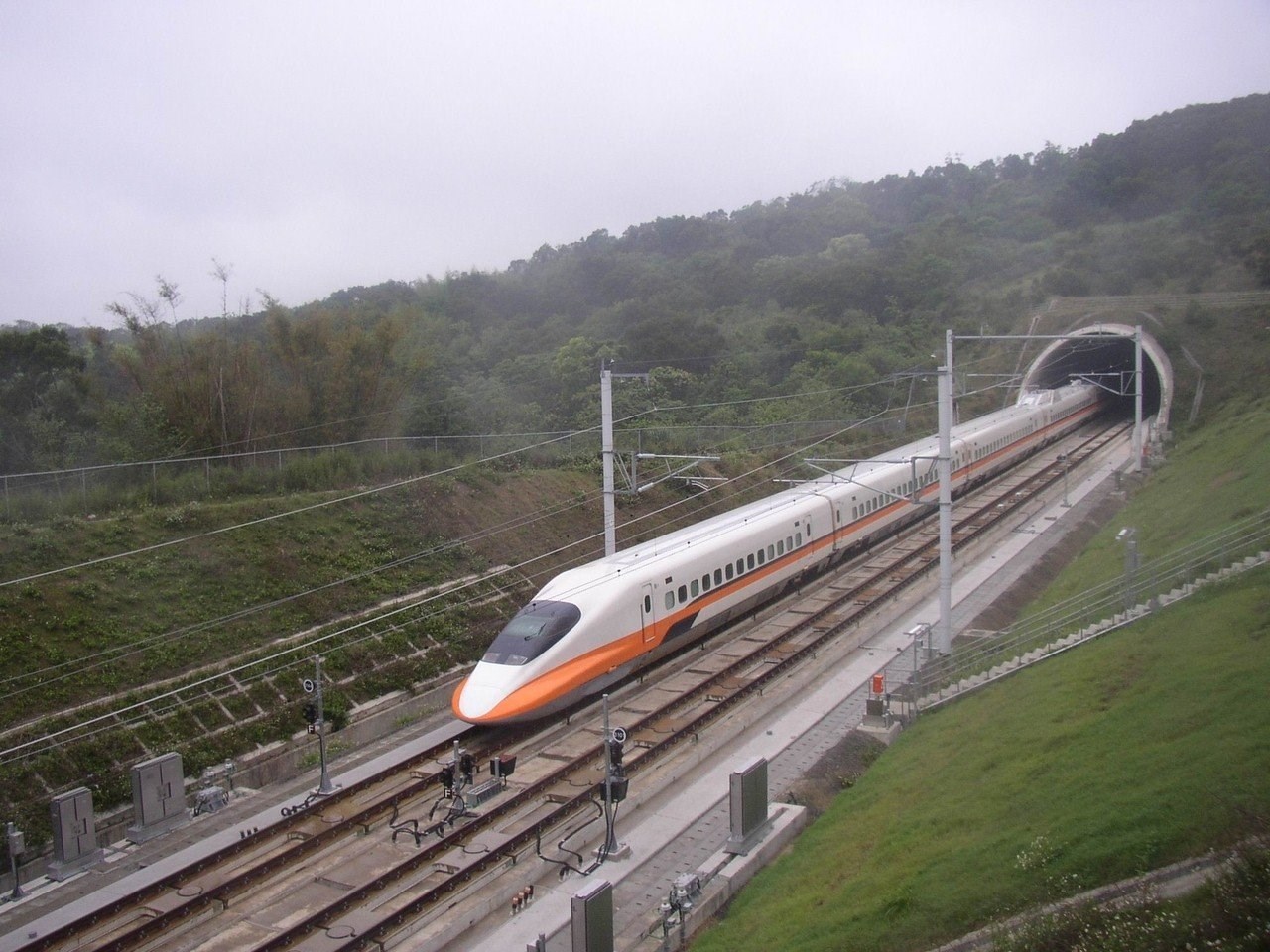
-
v
v
-
-
-
